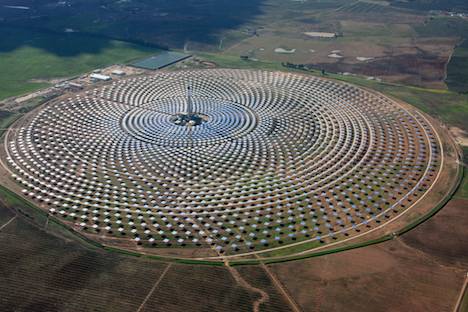I am leaving in an hour to catch a bus to the airport. I will land in Chongqing in the early evening and be to the hostel by 9PM at the latest. Here, courtesy of Lonely Planet and a wonderful CouchSurfer, are some of the things that I hope to do. How many can I cram in as a solo traveler?
Three Gorges Museum
This sleek museum showcases the history of settlement in the Chóngqìng region. A 1st-floor exhibition about the Three Gorges includes a model of the dam, and upstairs you can learn more about southwest China's minority cultures through their clothing and artwork. Some exhibits have better English captions than others, but the artefacts are well presented throughout.Cíqìkǒu Ancient Town
The opportunity to glimpse slices of old Chóngqìng makes it worth riding out to this part of town, on the Jiālíng River west of the centre. Most of the buildings, many dating to the late Ming dynasty, have been restored for tourists, and the main drag can feel like a carnival, but away from the central street, a living, working village remains. You can easily lose yourself in its narrow lanes, peeking into homes and tiny storefronts. And there's plenty to eat here, both in the alleys and overlooking the river.It's also worth poking your head inside Bǎolún Sì, one of Cíqìkǒu's only remaining temples. Its main building is more than 1000 years old.
Stilwell Museum
The Stilwell Museum by Eling Park is something of a novelty in China as it focuses on the American involvement in WWII. It is the former VIP guesthouse of the Kuomintang and residence of General Joseph Stilwell, commander of the US forces in the China-Burma-India Theatre and chief-of-staff to Chiang Kaishek in 1942.Stilwell realised early on that a successful resistance required the cooperation of the Kuomintang and communist forces, and it was at his urging that Chiang relented for a time. Repeated efforts to bring the two sides together in a truly unified front against the Japanese largely failed, Stilwell said later, because of Chiang's obsession with wiping out the communists. Vinegar Joe's caustic personality grated with Chiang and others, so despite major victories including retaking the Burma front and procuring fighter jets for the Chinese air force to fly a key route over the Himalayas, called the Hump, Roosevelt relieved him of command in 1944.
Jiefangbei Square
Junction of Mingzu Road, Mingquan Road and Zourong Road, Yuzhong District, Chongqing 400000, ChinaMuslim Restaurant of Tian Shan
Serves the dishes of the Silk Road, meaning lots of lamb - braised lamb, stewed lamb and lamb wrapped in buns - eaten with a side of black vinegar and garlic. Try the lǎng (50 jiao), crispy onion pancakes baked to perfection on the side of circular ovens.Hú Guǎng Huì Guǎn guild
The Hú Guǎng Huì Guǎn guild served as the seat of immigrant life 300 years ago in the Qin dynasty. Eager to increase the paltry population in Sìchuān, the government encouraged widespread immigration beginning in AD 316. By the time of the guild, the population was 800,000 and rapidly growing as settlers arrived mostly from the Hú (Húnán and Húběi) and Guǎng (Guǎngdōng and Guǎngxī) provinces, as well as ten others.People came to the guild for legal processing and to worship and celebrate with other new arrivals. English guides are available, though you could easily spend a day wandering on your own through the beautifully restored guild houses and their collections of furniture, art and jewellery. Also worth checking out are the daily performances on the three opera stages, highlighting some examples of the traditions immigrants brought to Chóngqìng - from the tea art of Xīzàng to the quick-change biàn lián mask changing of Sìchuān. Free preview performances are put on at 14:30. Full performances with tea service are at 20:00. The guild is a 15-minute walk from Liberation Monument.
Lǎojiē Shíbātī Teahouse
A teahouse has stood for 600 years here at the top of the Eighteen Stairs. Come for a fresh pot served with small plates of dried fruit and cakes and an arresting view of the old city. There's beer too.
There's been a teahouse on this spot for more than 600 years
and walking in here is like stepping into an antiques shop, with its wooden
interior, period photos and fabulous furniture. The views are cool too as you
look over one of the oldest parts of town, a maze of winding market lanes that
can be accessed by walking down the teahouse's namesake alley, Eighteen Steps
Lane (十八梯; Shíbātī).
Pirates Pub
Serves up the ingenious combination of pirates and disco. Local bands start playing most nights at 21:00 but the mutiny doesn't happen until 23:00. Look for three ship's sails.Little Swan Hot Pot
Recommended for those who don't subscribe to the sweating-buckets-perched-on-a-plastic-stool hotpot experience. There's air-con, tablecloths, and five kinds of broth. Ask to 'zìzhù huǒguǒ' (自 助火鍋), which allows you to choose from 30 different meats, vegetables and noodles wheeled to your table.Read more: http://www.lonelyplanet.com/china/chongqing/
Yangtze River Cruise
As I mentioned previously, it may be possible for me to get as far as Three Gorges. For the Yangtze river
cruise, you can normally (except peak season or holiday season) to get the
cheapest next day boat ticket at ChaoTianMen dock ticket offices in JieFangBei.
The company is called Chongqing Travel Group. The domestic (3 star) boats cost
ranging from around 400 RMB (no meals included) to 650 RMB (meals included),
and from 2 days to 4 days.












































